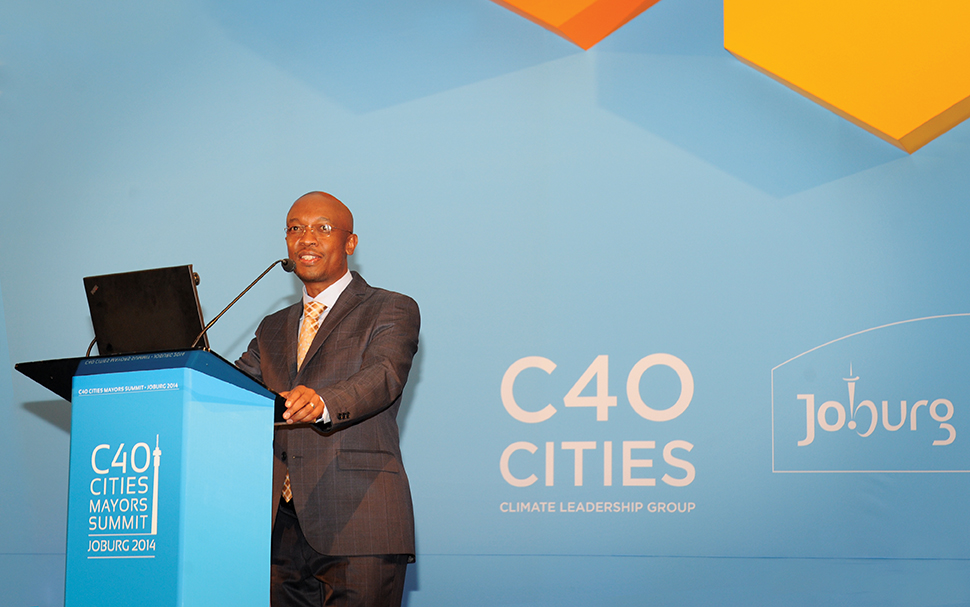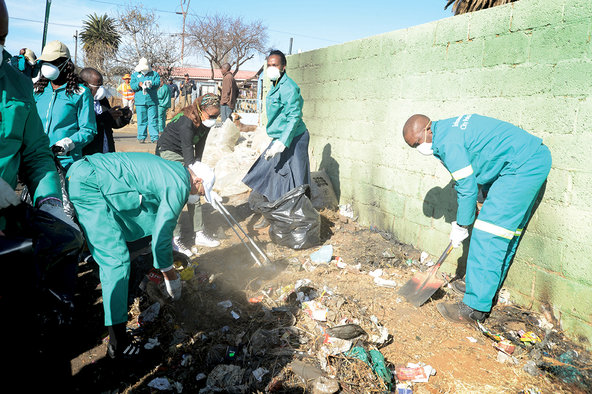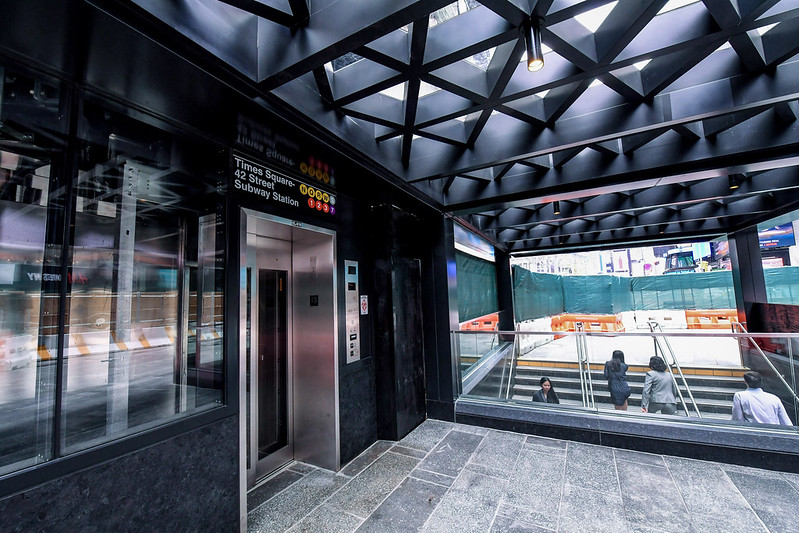
Interview with Mpho Franklyn Parks Tau, Mayor of Johannesburg
27 October 2014
by Richard Forster
Nick Michell talked to Mpho Franklyn Parks Tau, the Executive Mayor of Johannesburg, about the city’s innovative programmes and his leadership for African cities
Since its launch in 2009 how has the Rea Vaya Bus Rapid Transit system affected public transport in the city? How has the system expanded since then and are there plans to expand any further?
The construction of the Rea Vaya BRT, for which two of its three phases have already been completed from the southern parts of Johannesburg to the city centre, has been the most ambitious project ever undertaken by the metropolitan government.
The BRT system has also set a new benchmark for public transport in South Africa as its quality has been attracting private car users, which is a step towards achieving our goal of reducing traffic congestion. The system has also been a catalyst for the public transport transformation and integration of all modes. It has empowered previously disadvantaged public transport operators, particularly the minibus transport sector, which is a shareholder in the bus operating company of the BRT system through Pioneer Transport and Ditsamaiso.
For a system that started with only 40 buses in September 2009, its growth has been as quick as demand, and this has driven the city to operate a total of 277 buses today, which all meet the Euro Emission Standard ratings. Construction and implementation of the third phase of the BRT system, in a bid to expand it to the northern and eastern parts of the city, is currently underway and on track for full operation in 2016. This phase is set to be launched with a fleet that uses both biogas and diesel to support the city’s climate change strategy. This is particularly significant because these can also be sourced locally and foster job creation. More than 60,000 passengers use the BRT daily and this number is expected to grow to about 200,000 when the third phase is launched in 2016.
In June, Johannesburg issued its first green city bond. What made the city move into green bonds? What initiatives will receive funding and how are investments being ring fenced and verified as ‘green’? What are the plans for developing this finance programme?
The Republic of South Africa has committed itself through the United Nations Framework Convention on Climate Change (UNFCCC) to reduce greenhouse emissions that are harming our environment. The national target is to reduce emissions by 34 percent by 2020 and 42 percent by 2025. This is highlighted in the Integrated Energy Planning Report of 2012.
In issuing a green bond, the city not only raises funding, but it also sets an example of the importance of a green economy and the need to respond comprehensively to climate change and sustainably manage resources.
The decision to issue a green bond was also motivated by our strategy to diversify the city’s current sources of funding. The issuance of the green bond will assist us with a source of funding towards capital expenditure to expedite our environmental solutions in the power, transport, water and waste sectors. What distinguishes this green bond from any other general obligation bond is that the projects to be financed are green initiatives. These include the Biogas to Energy Project and the Solar Geyser Initiative, and all other projects that reduce greenhouse emissions and contribute to a resilient and sustainable city.
The city, together with its lead advisors, adopted a selection criterion based on the criteria utilised by the largest issuers of green bonds, which are the World Bank and the International Finance Corporation, to verify projects as green. Project specific proceeds are not ring-fenced as Johannesburg’s investors took on the city’s credit/balance sheet risk.
Could you explain how the ‘Corridors of Freedom’ initiative will improve inclusiveness and accessibility in Johannesburg?
The Corridors of Freedom initiative is a demonstration of Johannesburg’s commitment to its primary objective to ‘re-stitch’ the city’s urban form, which was divided by its apartheid past.
We have already embarked on a new spatial vision in line with the Growth and Development Strategy 2040, which is based on corridor transit-oriented development, such as the Rea Vaya BRT system. This is paving the way in shaping the future of the city to consist of well-planned transport arteries, dubbed the ‘Corridors of Freedom’ that link to interchanges where the focus is on mixed-use development and high density accommodation. This will be supported by office buildings, retail developments and opportunities for leisure and recreation.
In the long term, Johannesburg citizens will live closer to their workplace and be able to work, stay and play without having to use private motorised transport. Safe, affordable and convenient buses, cycling and pedestrian activity are set to replace the carbon burning private car.
For far too long, the city has remained divided by our past and divided between rich and poor, white and black, townships and suburbs. Black people in the main continue to live far from their workplaces and have to travel big distances to reach places of work, school, and leisure. Corridors of Freedom looks to remove these boundaries to link jobs to people and people to jobs.
Due to the fact that developments are happening along transport corridors, the provision of transport like the BRT system is already enabling fast, safe and affordable mobility along the corridors. Thus we have dubbed these routes ‘Corridors of Freedom’, which give Johannesburg citizens increased freedom of movement as well as economic freedom that liberates them from the apartheid spatial legacy that is characterised by informal settlements, poor schooling and limited recreational spaces.

The city relies heavily on coal-fired power stations. How are you looking to diversify the energy supply and invest in renewables?
One of the projects that is currently setting the benchmark for the city’s future sustainable settlements is the Cosmo City Climate Proofing Program, which promotes development that reduces the risks of climate change by promoting energy conservation. This is through the installation of low-pressure solar water heaters, insulated ceilings, and energy efficient lights in a form of compact fluorescent lamps.
The poorer citizens, in particular, spend a large amount of their household income on energy services. They often heat water using inefficient means, such as electric kettles and stoves.
The provision of the low-pressure solar water heaters to low-income homes offers these households an affordable source of hot water, as well as a means to reduce electricity costs and protect the health of the communities.
Meanwhile, the insulated ceilings provide one of the most effective means for reducing energy use within a household, as they decrease the need for active space heating in winter and reduce the use of coal, wood and paraffin in disadvantaged communities.
The programme is also set to serve as a benchmark for the transformation of informal settlements into sustainable human settlements. The impact of its interventions on electricity costs are calculated by multiplying the reductions in space and water heating energy requirements by electricity unit costs of US$0.90. This amounts to annual savings per household of R932 (US$84) for the solar water heater and R223 (US$20) for the ceiling interventions. This is a lot for a poor household.
As part of the programme, we are currently conducting a baseline study and monitoring the energy and water usage to measure energy and water consumption in the Cosmo City homes prior and post- implementation. The data will be used to calculate carbon savings arising from the project in order to raise carbon finance in the carbon market and fund more energy efficiency and other development measures.
How does crime affect outside investment in the city? What initiatives have you taken on public safety? To what extent are citizens involved in this and other programmes of the city?
Unfortunately, Johannesburg, like any other developing metropolis is affected by crime. To counter this, the city’s metro police department has made some impressive strides through an inner city programme called ‘Clean Sweep’.
The programme has been applauded by stakeholders, particularly business, for its positive impact on crime reduction in the inner city. It also saw areas cleared for walking after illegal informal trading had taken over the pavements while traffic flow also received a boost.
As a result, the city recorded a rise in investor confidence in its ability to curb crime and sparked a significant spurt of investments into urban rejuvenation, human settlement and in the purchase of old buildings across the city.
Many of the purchases of the old buildings that are in a bad state are aimed at reconstructing them in line with the plan to turn the city into a liveable, sustainable and clean environment to do business in. While crime affects investments adversely, working together with all city stakeholders has resulted in the opposite. This can be attributed to three of the city’s initiatives aimed at promoting public safety including the establishment of the Community Safety Forum, the Joburg 10-Plus and the City Safety Strategy.
The Joburg 10-Plus, in particular, depends on the extent to which citizens are involved in its functioning and operation to make a successful impact. Meanwhile, the interrelationship between Community Policing Forums, private security companies and committees, such as the Local Drug Action Committee, among others, exist to facilitate the involvement of citizens using the Joburg 10-Plus programme as a trigger to curb crime in their respective areas of work, play and, or residence across the city.
Going forward, the city will be looking at establishing street committees and further aligning with the Gauteng provincial programmes for strategic and sustainable impact throughout the province.

More African cities have joined C40 in the last 12 months including Cape Town, Dar es Salaam and Nairobi. Has Johannesburg played an active role in promoting C40 to these cities? Given the importance of sustainability and the threat of climate change on what is the world’s most urbanising continent, how can C40 increase its membership in Africa?
Johannesburg’s hosting of the C40 Mayors Summit in February this year brought about a lot of awareness about climate change and the significant role cities can play in addressing this global predicament, hence the interest expressed by other African cities.
Until then, Johannesburg had taken the lead on the African continent by participating in many forums where we promoted the benefits of being a member of the C40 Group in the form of technical assistance and participating in networks.
Currently, Johannesburg hosts a C40 Regional Director who supports us and the city to engage with other cities, especially with respect to issues that include institutional arrangements, funding solutions, expertise capacity and specific projects and programmes.
This calls on the city to continuously demonstrate commitment to mitigation and adaptation through international participation on various platforms– earning the status of representative
and spokesperson on behalf of the African continent–which also enhances Johannesburg’s influence in Africa.
Johannesburg is a water-scarce part of South Africa, with the bulk of the city’s water coming from neighbouring country, Lesotho. What challenges does this create and how is the city trying to improve its water management?
Johannesburg is one of the few cities of its size in the world, which is not situated on a major watercourse. This alone creates a challenge in that the cost of supplying potable water to our citizens becomes high. In cities like this, water conservation becomes very critical.
Some of the projects that are being implemented by Johannesburg include Pipe Replacement, which is directed at replacing about 900 kilometres of old water network pipes over a period of four years. This will assist in reducing the physical loss that occurs in our distribution network.
The other project, Pressure Management, focuses on the refurbishment of over 500 pressure reducing valves that exist in the city’s water network. The reduction of burst pipes that the city will realise through the implementation of this project will mean less physical loss and it will also assist in reducing background leaks that occur in residential properties.
The city is also driving the Rainwater Harvesting project, through which we aim to install rainwater harvesting tanks in 500 schools in all our seven regions. Another intervention is the use of underground water, which is set to start promoting the responsible use of underground water in areas where there is a high water table.
In addition, we will be installing new pressure reducing valves in areas where there is excessive pressure on the water distribution network.
Retrofitting of Plumbing Features in private properties is another of the city’s projects that focuses on areas where there is a high loss of water in private properties. The project is currently being implemented in Soweto, south of Johannesburg.
In a past interview you were quoted as saying: “By 2014, our aim is that all settlements within the city should have legal status and that services such as water, sewage, lighting and roads, be substantially upgraded”. How far has this been achieved?
The city has for most of its informal settlements provided access to water and sanitation on a large scale. Roads have also been constructed to some extent. What we have not begun implementing is improved electricity access due to policy issues related to City Power, which is one of Johannesburg’s entities, that could not install electricity in ‘unproclaimed’ areas.
This, however, is about to change as there is a policy shift which has enabled the city to begin planning for pilot informal settlements where we will install electricity. The project is underway and soon the city will be able to say we provide all basic services in our informal settlements. The city has also had some success in other areas. One example is the informal settlement of Ruimsig, west of Johannesburg, where we re-blocked the settlement, creating enough space within it to enable vehicles, especially ambulances, to gain easy access to the area. This is the plan that the city expects to be rolled out in other informal settlements, particularly because it helps control shack fires and save lives.










